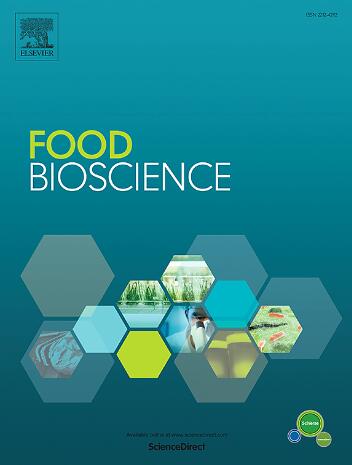Sprouts, microgreens, and baby leaves cultivation in controlled environment agriculture- a panacea for global food and nutritional security
IF 5.9
1区 农林科学
Q1 FOOD SCIENCE & TECHNOLOGY
引用次数: 0
Abstract
Background
Sustainable production of microscale and leafy vegetables, especially sprouts, microgreens, and baby greens in controlled environment agriculture, represents a key innovation of the 21st century. A controlled environment mimics natural growth conditions, enabling a year-round supply of leafy vegetables while ensuring standard quality and maximizing nutrient bioavailability.
Scope and approach
This review comprehensively describes the most recent trends in indoor cultivation practices to enhance the quality and nutrient profile of microscale and leafy vegetables, emphasizing the role of technological innovations, substrate selection, artificial lighting, and other environmental factors. It also discussed the vital role of these vegetables in alleviating the triple burden of hunger and strengthening global food and nutrition security while catering to the rising demand for premium and health-promoting food products. Despite being an excellent alternative to conventional agriculture, limitations persist with CEA preventing its large-scale application globally; hence, challenges and prospects are also outlined in detail.
Key findings and conclusion
Adopting environmentally sustainable technologies and soilless cultivation has created numerous opportunities for the efficient production of nutrient-dense sprouts, microgreens, and baby greens enriched with vitamins, protein, dietary fibers, phenolics, flavonoids, and antioxidants. These methods offer cost-effective solutions with minimal processing while reducing the harmful impact of soil-borne pathogens, pesticides, and climate change. Additionally, temperature modulation in specific ranges and artificial light sources, especially LED and UV-LED, have significantly proven efficient for indoor vertical farming. These sustainable practices tend to mitigate global food demand and address malnutrition deficiencies.

控制环境农业中的芽菜、微型蔬菜和幼叶种植——全球粮食和营养安全的灵丹妙药
在可控环境农业中可持续生产微型蔬菜和叶类蔬菜,特别是豆芽、微型蔬菜和幼嫩蔬菜,是21世纪的一项关键创新。受控环境模仿自然生长条件,使叶菜全年供应,同时确保标准质量和最大限度地提高营养生物利用度。本文全面介绍了室内栽培技术的最新发展趋势,以提高微尺度蔬菜和叶菜的质量和营养成分,强调了技术创新、基质选择、人工照明和其他环境因素的作用。会议还讨论了这些蔬菜在减轻饥饿三重负担和加强全球粮食和营养安全方面的重要作用,同时满足对优质和促进健康的食品日益增长的需求。尽管CEA是传统农业的优秀替代品,但其局限性仍然存在,阻碍了其在全球范围内的大规模应用;因此,本文也对挑战和前景进行了详细的概述。采用环境可持续的技术和无土栽培为高效生产富含维生素、蛋白质、膳食纤维、酚类物质、类黄酮和抗氧化剂的营养丰富的芽菜、微绿菜和嫩芽创造了许多机会。这些方法以最少的加工提供了具有成本效益的解决方案,同时减少了土壤传播的病原体、农药和气候变化的有害影响。此外,特定范围的温度调制和人工光源,特别是LED和UV-LED,已被证明对室内垂直农业非常有效。这些可持续做法往往有助于缓解全球粮食需求,解决营养不良问题。
本文章由计算机程序翻译,如有差异,请以英文原文为准。
求助全文
约1分钟内获得全文
求助全文
来源期刊

Food Bioscience
Biochemistry, Genetics and Molecular Biology-Biochemistry
CiteScore
6.40
自引率
5.80%
发文量
671
审稿时长
27 days
期刊介绍:
Food Bioscience is a peer-reviewed journal that aims to provide a forum for recent developments in the field of bio-related food research. The journal focuses on both fundamental and applied research worldwide, with special attention to ethnic and cultural aspects of food bioresearch.
 求助内容:
求助内容: 应助结果提醒方式:
应助结果提醒方式:


